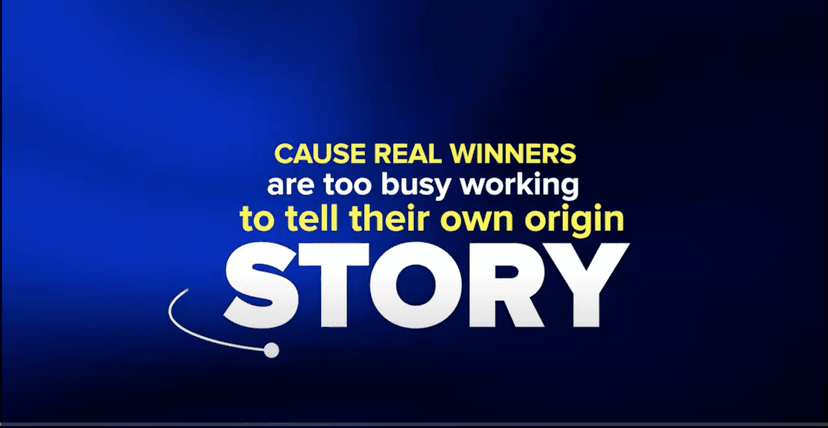The COVID-19 pandemic and recent tariff wars have exposed the vulnerabilities and complexities of global supply chains like never before. In the episode "Supply Chain Innovation Showdown," hosts Jeremy Axel and Douglas Cox dive deep into the real-world challenges, lessons, and innovations that are reshaping supply chain management. Their candid discussion offers a wealth of actionable insights for supply chain professionals, entrepreneurs, and business leaders seeking to build more resilient, adaptive, and innovative supply chains.
Below, we break down the main themes and expert advice from the episode, providing a comprehensive guide to transforming supply chain bottlenecks into strategic advantages.
Why Diversification Matters
The pandemic and tariff wars revealed the dangers of relying on a single supplier or region. When lead times for critical components ballooned to 50 weeks or more, companies with diversified supply chains weathered the storm far better than those with a “one-trick pony” approach.
Key Takeaways:
- Single-source dependency is a major risk, especially for specialized or patented parts.
- Diversification isn’t just about having multiple suppliers; it’s about ensuring those suppliers are truly capable of meeting your needs under stress.
Actionable Steps
- Map Your Supply Chain: Identify all single points of failure, including sole-source suppliers and critical regions.
- Develop Backup Suppliers: Proactively qualify two or three vendors for each key component or service.
- Tier Your Suppliers: Create a hierarchy of primary, secondary, and tertiary suppliers to ensure redundancy.
- Test Your Backups: Periodically place small orders with backup suppliers to ensure they’re ready when needed.
Expert Insight:
Jeremy Axel emphasizes, “Even if you have a strong relationship with a vendor, always maintain backups. You’ll save so much pain.”
The Power of Data
Supply chain disruptions often catch companies off guard because they lack visibility into their own data. Jeremy Axel and Douglas Cox stress the importance of using historical data, such as reorder patterns, sales volumes, and seasonal trends, to anticipate and mitigate risks.
Key Takeaways:
- Historical data helps forecast demand, anticipate shortages, and avoid last-minute surprises.
- Automation streamlines data collection, reporting, and communication, reducing errors and speeding up decision-making.
Actionable Steps
- Integrate Systems: Connect your ERP, inventory, and vendor management systems for unified data visibility.
- Automate Reporting: Set up automated alerts for low inventory, delayed shipments, or price changes.
- Analyze Trends: Regularly review sales and purchasing data to identify patterns and adjust forecasts.
- Scenario Planning: Use data to model “what-if” scenarios and prepare contingency plans.
Expert Insight:
Douglas Cox notes, “Having a structured, data-driven plan is essential to sustaining revenue growth and maintaining a positive customer experience.”
Building Trust Beyond the Contract
Strong vendor relationships are built on transparency and open communication, not just polished presentations or case studies. Both hosts recount experiences where vendors dazzled with marketing but failed to deliver operationally.
Key Takeaways:
- Site visits are invaluable for verifying a supplier’s true capabilities.
- Open communication helps identify potential issues before they become crises.
- Transparency builds trust and enables collaborative problem-solving.
Actionable Steps
- Conduct Site Visits: Go beyond the sales pitch, visit facilities, meet the team, and observe operations firsthand.
- Request References: Speak directly with current customers to validate the vendor’s track record.
- Share Forecasts: Provide suppliers with your demand forecasts and ask for theirs in return.
- Establish Regular Check-Ins: Schedule routine calls or meetings to discuss performance, challenges, and upcoming needs.
Expert Insight:
Jeremy Axel advises, “Look behind the hood and ensure that vendors are running their businesses with the same level of professionalism and reliability that you expect from your own operations.”
4. Due Diligence: Vetting Vendors for Financial and Operational Stability
Avoiding Costly Surprises
A flashy website or impressive case study is no substitute for real due diligence. Jeremy shares how running credit reports and background checks on vendors can prevent disasters, such as a supplier taking a down payment and failing to deliver.
Key Takeaways:
- Financial health is as important as operational capability.
- Reverse due diligence, where you vet your suppliers as thoroughly as they vet you, reduces risk.
Actionable Steps
- Run Credit Checks: Assess the financial stability of all critical suppliers.
- Review Legal and Compliance Records: Check for lawsuits, regulatory violations, or other red flags.
- Evaluate Operational Processes: Ensure suppliers have robust quality control, risk management, and contingency plans.
- Document Everything: Keep detailed records of all due diligence activities and findings.
Expert Insight:
Jeremy recounts, “We managed to get through a vendor crisis, but it was nerve-wracking and could have been mitigated with better upfront scrutiny.”
5. Continuous Improvement: Learning, Adapting, and Innovating
Supply Chain as a Living System
Supply chain management is not a set-it-and-forget-it function. It requires ongoing learning, adaptation, and innovation to stay ahead of disruptions and maintain customer trust.
Key Takeaways:
- Continuous learning from past crises strengthens future resilience.
- Innovation is not just about technology; it’s about process, relationships, and strategic foresight.
Actionable Steps
- Debrief After Disruptions: Analyze what went wrong and what worked during supply chain crises.
- Invest in Training: Keep your team updated on best practices, new technologies, and industry trends.
- Engage with Peers: Share experiences and insights with other supply chain professionals.
- Iterate and Improve: Regularly update your supply chain strategies based on new information and changing conditions.
Expert Insight:
Doug Cox concludes, “Supply chain management is a continuous learning process. The collective effort to build stronger, more adaptive supply chains benefits both businesses and their customers.”
Conclusion: Transforming Bottlenecks into Breakthroughs
The "Supply Chain Innovation Showdown" episode makes it clear: the future belongs to companies that proactively manage risk, invest in data and automation, build transparent vendor relationships, and continuously adapt to change. By following the actionable strategies outlined above, you can turn supply chain vulnerabilities into sources of strength and innovation.
Key Pillars of Supply Chain Innovation:
- Diversification and backup planning
- Data-driven decision making and automation
- Transparent, trust-based vendor relationships
- Rigorous due diligence and risk management
- Continuous learning and improvement
Ready to innovate your supply chain?
Start by mapping your vulnerabilities, investing in data integration, and building stronger partnerships today. Share your own experiences and insights, because in supply chain management, collective wisdom is one of the most powerful tools we have.
Have a supply chain story or question?
Connect with Jeremy Axel and Douglas Cox for more.



